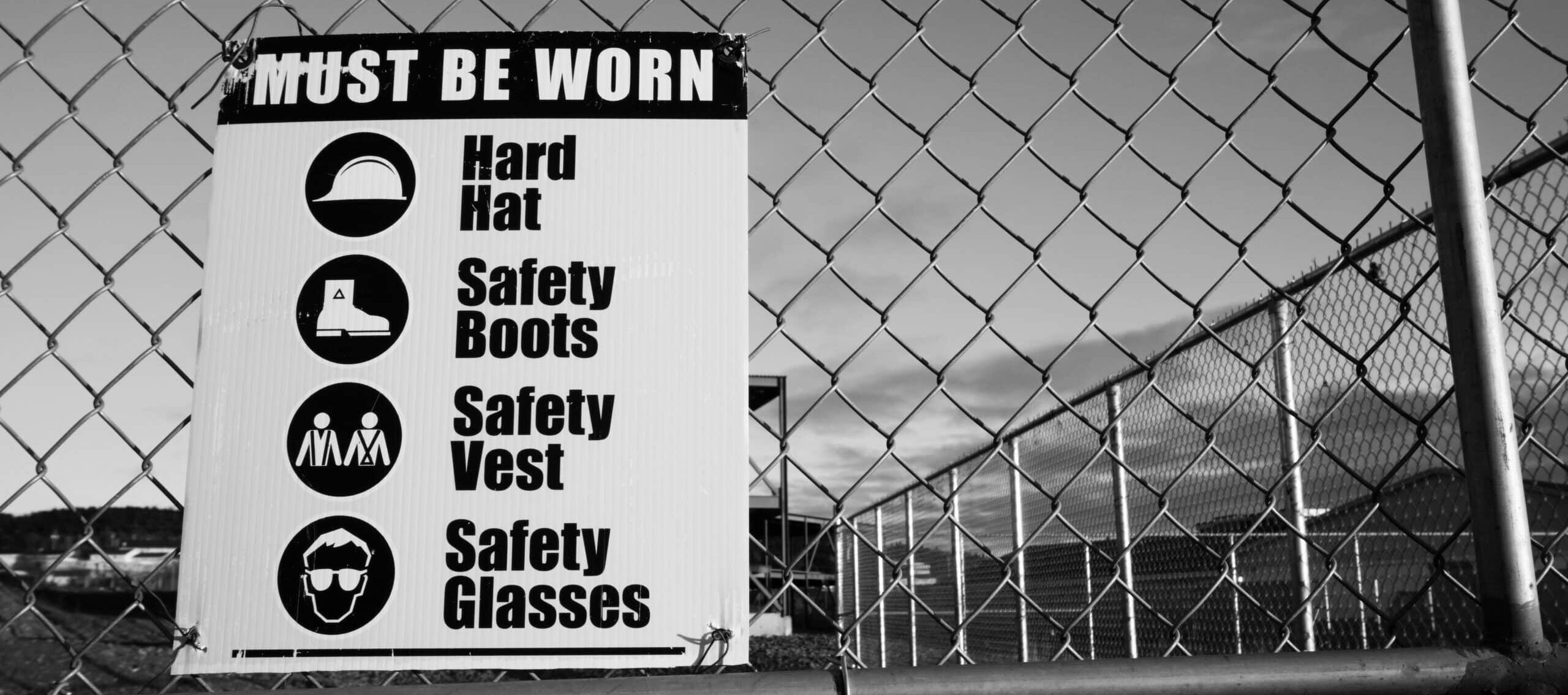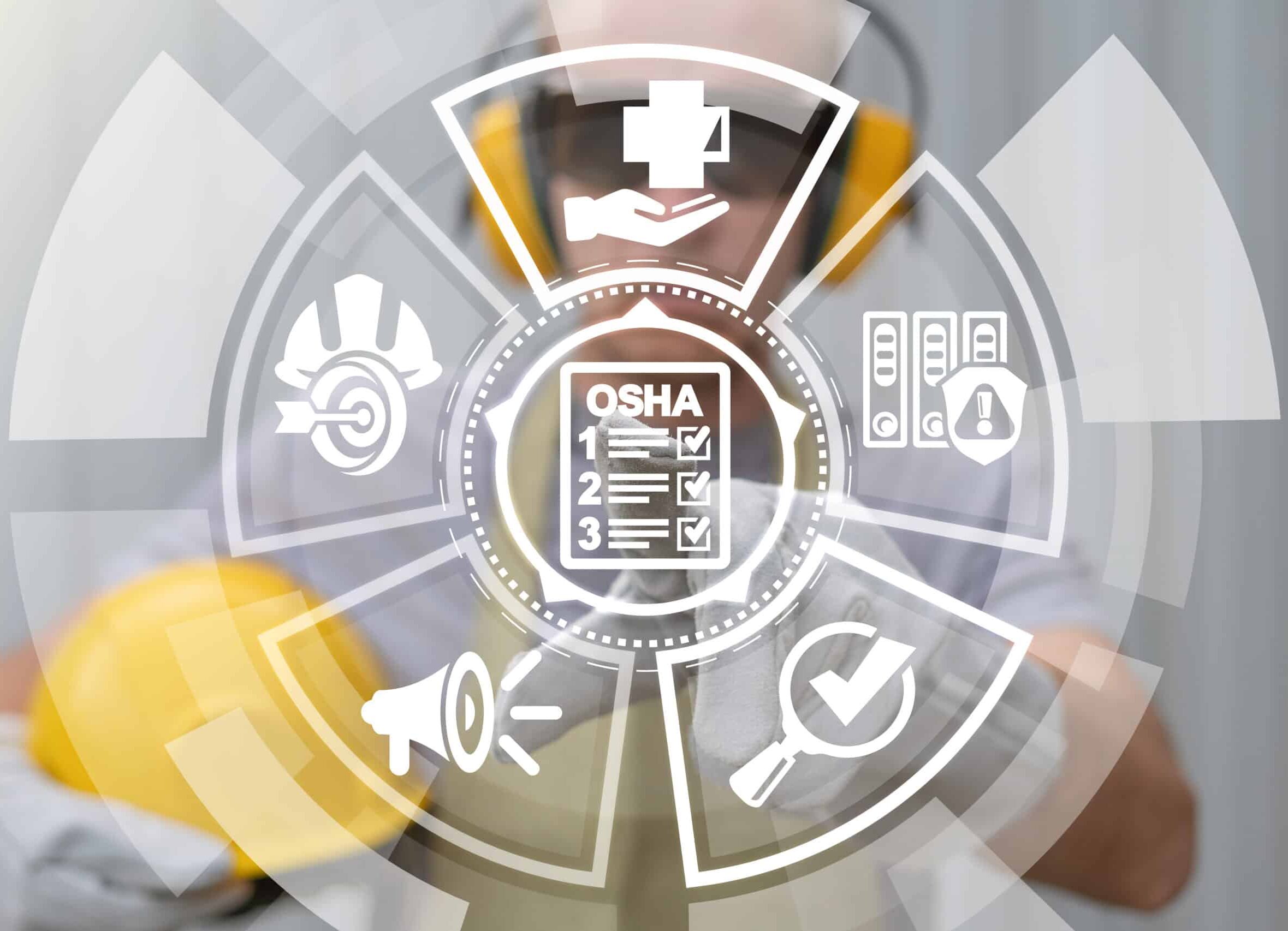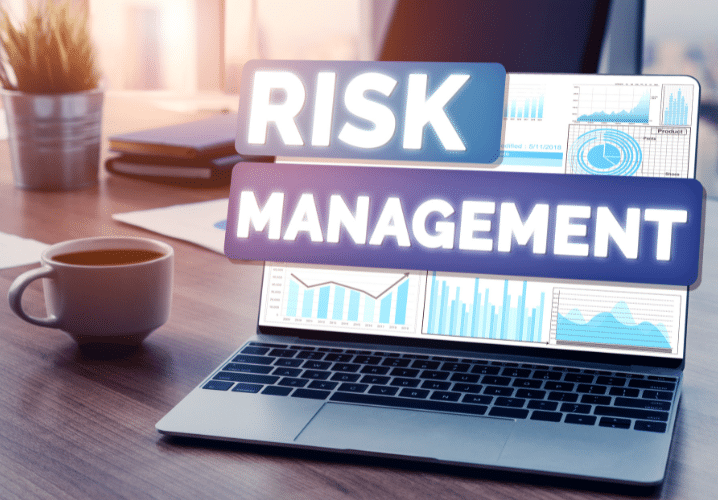February 21, 2024 8 min read

OSHA 10 Construction: Complete Guide to Safety, Compliance, and Training
Industry:
Solution:

The Occupational Safety and Health Administration’s (OSHA) 10-hour construction training is a vital program designed to enhance workplace safety, reduce accidents, and ensure regulatory compliance. Whether you’re a construction professional looking to deepen your knowledge, or an employer committed to fostering a secure working environment, this guide will navigate you through the essential aspects of OSHA 10 Construction.
What is OSHA 10 Construction?
The Occupational Safety and Health Administration (OSHA) is a government agency within the U.S. Department of Labor. They are responsible for ensuring that working conditions are safe and healthy for employees across a variety of industries, including industrial manufacturing, logistics, and more.
OSHA 10 is a ten-hour safety course designed by OSHA that trains construction teams on the safety basics they need to stay safe and avoid hazards on the job site.
Participants who successfully complete OSHA 10 Construction training receive a certification, demonstrating their understanding of workplace safety practices. This program aims to enhance safety awareness among construction workers, reduce the likelihood of accidents, and contribute to the overall well-being of those employed in the construction sector.
Benefits of an OSHA 10 Construction Certification
Obtaining an OSHA 10 Construction certification has many benefits both for individual workers and for construction firms:
- It enhances safety awareness on the job site. Certified workers gain a comprehensive understanding of potential hazards and the best practices to mitigate risks, leading to a substantial reduction in accidents and injuries.
- It enhances the employee skills. An OSHA 10 construction certification makes employees more effective at their jobs. For construction firms, this certification translates to a safer work environment, reduced liability, and increased eligibility for projects that prioritize safety standards.
Does OSHA 10 Expire?
OSHA 10 construction certifications never expire, but that doesn’t mean employees should only take the training once. In fact, many employers require refresher training every three or five years because the training is so important.
How to Get OSHA 10 Certified
Getting OSHA 10 certified is a straightforward process:
- Step 1: Find an authorized OSHA training provider. Providers like Vector Solutions offer OSHA 10 courses either in-person or online, providing flexibility for different learning preferences.
- Step 2: Employees complete training. During the course, participants cover essential topics related to construction safety, with a focus on hazard recognition and prevention.
- Step 3: Receive certification. Upon successful completion of the training, participants receive their OSHA 10 Construction certification.
NOTE: It’s essential to choose a reputable training provider that meets OSHA’s standards to ensure the certification’s validity.
What Topics Does OSHA 10 Construction Cover?
OSHA 10 hour construction covers a variety of important safety topics. This training tends to review safety and health hazards generally and is ideal for entry-level workers. It can also be a great refresher course, compared to the longer 30-hour training, which we’ll discuss more in a minute.
OSHA 10 construction topics include:
- Electrical Safety
- Fall Protection
- Struck-By & Caught-Between Accidents
- Personal Protective Equipment (PPE)
- Scaffolds
- Cranes
- Hand & Power Tools
- Excavations
- Materials Storage
- Demolition
- Hazards in Construction
What is the difference between OSHA 10 and OSHA 30?
OSHA 30 construction training is intended for those in supervisory roles or employees with safety responsibilities (e.g., construction supervisors or site safety managers).
Because this training is 30 hours long, rather than just ten, it can dive into topics a little more deeply. This training includes:
- Contractor’s Safety and Health Program
- Reporting and Record Keeping
- Electrical Hazards
- Fall Protection
- Materials Handling
- Cranes and Rigging
- Motorized Mobile Platforms
- The Competent Person
- Excavations
- Work Zone Traffic Control
- Forklift Hazards
Top OSHA Violations to Look Out For
Architecture Engineering and Construction (AEC) firms take safety seriously, but construction is an inherently dangerous industry. Despite the progress that we have collectively made, the same OSHA violations persist each year.
The top ten OSHA violations from last year are:
- Fall Protection, General Requirements
- Hazard Communication
- Ladders
- Scaffolding
- Powered Industrial Trucks
- Lockout/Tagout
- Respiratory Protection
- Fall Protection, Training Requirements
- Personal Protective and Lifesaving Equipment, Eye and Face Protection
- Machine Guarding
To put this in perspective, these violations cost firms over $85 million every year. Why are the penalties that steep?
It’s important to put the cost of safety into perspective. When these OSHA regulations aren’t followed, people get hurt or even killed. And with construction having the most fatalities of any industry in 2023, this training cannot and should not be ignored.
What Are The OSHA “Fatal Four”?
The OSHA Fatal Four (also known as the Focus Four) refers to the four leading causes of fatalities in the construction industry. The Fatal Four include:
- Falls: Falls from heights are a major cause of construction-related fatalities. This category encompasses falls from ladders, scaffolding, roofs, and other elevated surfaces.
- Struck By: This hazard involves workers being struck by objects or equipment. This can include falling tools, equipment, or other materials.
- Electrocutions: Electrocution incidents result from contact with live electrical sources, faulty wiring, or equipment. Electrical hazards pose a serious threat on construction sites.
- Caught-In or Caught-Between: This category includes incidents where workers are caught-in or compressed by equipment or objects, such as machinery or collapsing structures.
The OSHA Fatal Four serves as a focal point for safety training and prevention efforts to address these specific hazards and reduce the number of fatalities in the construction industry.
OSHA Reporting Requirements for Construction Firms
You may be wondering what the difference is between OSHA Reporting and OSHA Recordkeeping. While they are both very similar, it’s important to understand the differences between the two.
- OSHA Reporting: Refers to notifying OSHA about work-related incidents that have occurred at your establishment. There are two main scenarios in which you would need to notify or report to OSHA: Immediately after a fatality or serious injury and annually for OSHA data collection.
- OSHA Recordkeeping: Refers to written documentation of all OSHA Recordable incidents that have occurred throughout the year. For example, every time there’s a work-related injury at your workplace, you need to record that. However, in most cases, you don’t need to immediately notify or report those injuries to OSHA.
To learn everything you need to know about OSHA reporting and recordkeeping requirements, download our comprehensive guide 👇
Download the OSHA Recordkeeing and Reporting Guide
Get a comprehensive overview on how to comply with OSHA’s requirements for reporting and recording work-related injuries and illnesses
View Guide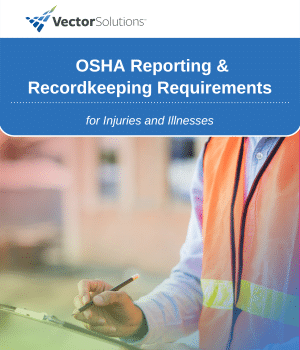
Recent OSHA Reporting Changes
In July 2023, the Department of Labor announced that certain employers in designated high-hazard industries (like construction) must electronically submit injury and illness data to OSHA.
If you aren’t sure what’s expected of you this year, you can learn more about 2024 OSHA recordkeeping requirements.
Vector Solutions Safety Solutions & OSHA 10 Construction Training
At the end of the day, safety on construction sites is critically important to your people and your business. Choosing the right safety, training, and compliance partners can make a world of difference.
At Vector Solutions, our mission is simple: we want to make people safer, smarter, and better. Everything we do revolves around improving learner outcomes, so they can do their jobs more efficiently and go home at the end of the day.
Vector EHS Management
Bring your organization’s employee health and safety (EHS) activities, tasks, and reports into one, easy-to-use solution to gain visibility into the data and trends needed to shift from a reactive to a proactive safety culture.
Our EHS Management platform helps you:
- Improve the efficiency of your EHS program
- Streamline compliance
- Reduce incident costs
- Foster Consistency and Transparency
Learn More About Vector EHS
Bring all your organization’s EHS activities, tasks, and reports into one single, easy-to-use solution and gain visibility into the data and trends needed to shift from a reactive to a proactive safety culture
Learn More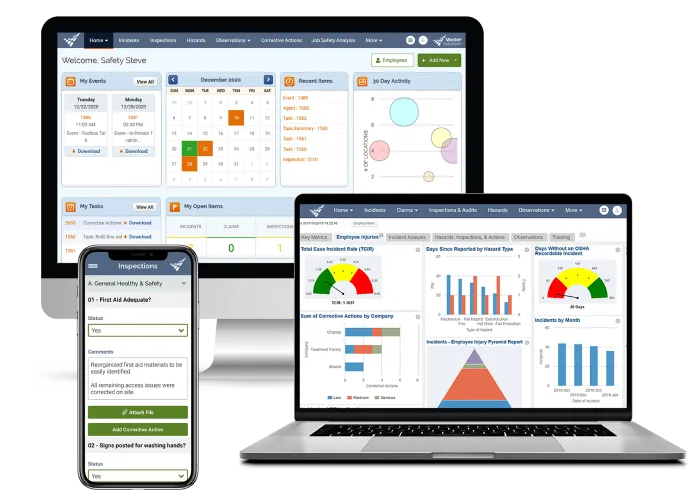
OSHA 10 Construction Training Provider
Vector Solutions is a certified provider of OSHA 10 construction training. But we also specialize in providing comprehensive training to architecture, engineering, and construction firms.
Don’t just stop with OSHA construction training. Ensure your workforce follows broader safety best practices by providing in-depth and award-winning health, safety, and environmental (HSE) training. And boost workforce retention with an in-depth safety and career development training offering as well as robust learning paths.
Safety Case Studies
We have developed numerous safety case studies based on real situations:
- Safety Case Study: Struck by Forklift
- Safety Case Study: Properly Securing a Cylindrical Load
- Safety Case Study: Lockout Tagout: Electrical or Heavy Equipment
These case studies demonstrate how failure to comply with safety procedures can have devastating outcomes and go a step further to ensure the learner is gaining knowledge on how these measures offer protection and security for them and their co-workers to further emphasize the importance of maintaining a safe working environment.




